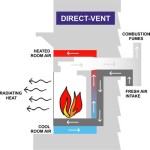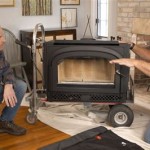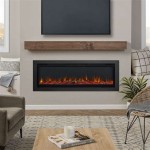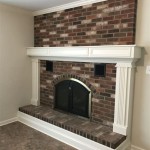Corner Fireplace Stone: Aesthetics, Functionality, and Installation
A corner fireplace, especially one adorned with stone cladding, can be a significant design feature in a home. It serves as both a focal point and a source of warmth, often transforming otherwise unused space into a cozy and inviting area. The application of stone to a corner fireplace enhances its aesthetic appeal, providing texture, color, and a sense of permanence. This article will explore the various aspects of corner fireplace stone, including its benefits, different types of stone used, design considerations, and the process of installation.
The placement of a fireplace in a corner presents unique design opportunities. Unlike a traditional fireplace centered on a wall, a corner fireplace can be viewed from multiple angles, making it a natural gathering spot. This strategic positioning can improve the flow of a room and create a sense of intimacy. Integrating stone into the corner fireplace design further amplifies these advantages, adding visual interest and complementing a range of interior styles.
Enhanced Aesthetic Appeal and Design Flexibility
One of the primary benefits of using stone for a corner fireplace is its aesthetic versatility. Stone is available in a wide array of colors, textures, and shapes, allowing homeowners to customize the look of their fireplace to match their personal preferences and the overall design of their home. From rustic fieldstone to sleek, modern ledgestone, the options are extensive. The texture of the stone adds depth and dimension to the fireplace, creating a visually appealing focal point that can significantly enhance the character of a room.
The use of stone also offers design flexibility. It can be incorporated into various architectural styles, from traditional to contemporary. A corner fireplace clad in natural stone can lend a rustic charm to a cottage-style home, while a fireplace featuring engineered stone with clean lines can complement a modern, minimalist space. The choice of stone can also influence the perceived size and scale of the fireplace. Lighter-colored stones can make a small fireplace appear larger, while darker stones can add a sense of drama and sophistication to a larger fireplace.
Moreover, the arrangement of the stone itself contributes to the overall aesthetic. Stones can be laid in various patterns, such as stacked, staggered, or random, each creating a unique visual effect. Some homeowners opt for a more uniform and symmetrical arrangement, while others prefer a more natural and organic look. The grout color also plays a role in the final appearance, as it can either blend in with the stone or provide a contrasting accent.
The design possibilities extend beyond the fireplace itself. Stone can be used to create a hearth, surround, or even an entire accent wall around the fireplace. This can further enhance the fireplace's presence in the room and create a cohesive design scheme. The use of stone can also be extended to other elements of the room, such as a stone mantel or stone accents on nearby walls, to create a unified and harmonious look.
Material Selection: Natural vs. Engineered Stone
When considering stone for a corner fireplace, homeowners have two primary options: natural stone and engineered stone (also known as manufactured stone veneer). Each type has its own set of advantages and disadvantages, making the selection process dependent on factors such as budget, aesthetic preferences, climate, and ease of installation.
Natural stone is quarried directly from the earth and comes in a variety of types, including granite, limestone, slate, sandstone, and river rock. Each type of natural stone has its own unique characteristics in terms of color, texture, and durability. Natural stone is prized for its authenticity, natural variations, and timeless appeal. It is also known for its durability and ability to withstand the elements. However, natural stone can be more expensive than engineered stone, and it may require more specialized installation techniques due to its irregular shapes and sizes.
Engineered stone is a manufactured product that is designed to replicate the look and feel of natural stone. It is typically made from a mixture of cement, aggregates, and pigments. Engineered stone is often lighter and easier to install than natural stone, making it a popular choice for homeowners who are looking for a more cost-effective and convenient option. It is also available in a wider range of colors and styles than natural stone, allowing for greater design flexibility. While engineered stone may not have the same level of authenticity as natural stone, it can still provide a beautiful and durable finish for a corner fireplace.
The choice between natural and engineered stone often comes down to budget and aesthetic preferences. Natural stone is generally more expensive due to the cost of quarrying, processing, and transportation. However, some homeowners believe that the authenticity and unique characteristics of natural stone are worth the extra investment. Engineered stone offers a more affordable alternative that can still provide a visually appealing result. It is also a good option for projects where weight is a concern, such as when installing stone on a second-story fireplace.
Another consideration is the local climate. Some types of natural stone are more susceptible to damage from freeze-thaw cycles than others. In colder climates, it is important to choose a stone that is resistant to these effects. Engineered stone is often more resistant to freeze-thaw damage than natural stone, making it a good option for colder regions. Regardless of the type of stone chosen, it is important to properly seal and maintain the stone to protect it from the elements and prevent staining.
Installation Process and Considerations
The installation of stone on a corner fireplace requires careful planning and execution to ensure a safe and aesthetically pleasing result. Whether using natural stone or engineered stone, the process typically involves preparing the surface, applying mortar, setting the stones, and grouting the joints. It is generally recommended to hire a professional installer to ensure that the job is done correctly, especially when working with natural stone or complex designs.
The first step in the installation process is to prepare the surface. This typically involves cleaning the existing fireplace structure and applying a layer of cement board or metal lath to provide a stable and level surface for the stone. The surface should be clean, dry, and free of any loose debris. It is also important to ensure that the fireplace structure is structurally sound and capable of supporting the weight of the stone.
Next, a layer of mortar is applied to the back of the stone and to the prepared surface. The mortar acts as an adhesive, bonding the stone to the fireplace structure. The type of mortar used will depend on the type of stone being installed and the local climate. It is important to use a mortar that is specifically designed for stone applications and that is compatible with the stone being used.
The stones are then set into the mortar, one at a time. The stones should be carefully positioned to ensure that they are level and aligned. Spacers may be used to maintain consistent joint widths between the stones. The arrangement of the stones will depend on the desired pattern and aesthetic. It is important to allow the mortar to dry completely before proceeding to the next step.
Once the mortar has dried, the joints between the stones are grouted. Grouting fills the gaps between the stones, providing a weatherproof seal and enhancing the aesthetic appearance. The grout color can be chosen to either blend in with the stone or provide a contrasting accent. The grout is applied using a grout bag or a grout float, and excess grout is wiped away with a damp sponge.
Finally, the stone is sealed to protect it from moisture and staining. A sealant is applied to the surface of the stone, creating a barrier that prevents water and other liquids from penetrating the stone. The type of sealant used will depend on the type of stone and the local climate. It is important to reapply the sealant periodically to maintain its effectiveness.
Installing stone on a corner fireplace is a complex process that requires careful attention to detail. It is important to follow the manufacturer's instructions and to use the correct tools and materials. Hiring a professional installer can ensure that the job is done correctly and that the finished product is both beautiful and durable.
In addition to the technical aspects of installation, there are also design considerations to keep in mind. The size and shape of the stones should be appropriate for the size of the fireplace and the overall style of the room. The color and texture of the stone should complement the existing decor. It is also important to consider the placement of the fireplace in relation to other elements of the room, such as furniture and windows. By carefully planning and executing the installation, homeowners can create a stunning corner fireplace that will be enjoyed for years to come.

Discover The 61 Best Corner Fireplace Designs In 2024 Stone Remodel Gas

Faux Stone Corner Fireplace Genstone

Corner Fireplace Ideas Tags Diy Modern Home Design

Corner Stone Fireplace Photos Ideas Houzz

Cozy Corner Fireplace Ideas Barron Designs

Corner Stone Fireplace Traditional Living Room Other By Select Homes Of Iowa Houzz Ie

Corner Stone Fireplace Designs Cornering The Market

Corner Stone Fireplace Designs Tstwoodfurniture Com

57 Fireplace Ideas That Will Make Your Living Room Cozy

Corner Fireplace Design Ideas S Remodel And Decor Living Room Home Makeover
Related Posts








